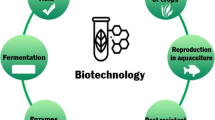Abstract
Thirteen species ofHibiscus, grown in southern Florida in 1964, varied significantly in fiber yield, yield components, and fiber quality characteristics. Correlation analyses first included, then excluded, improved varieties of the fiber plant species, kenaf (Hibiscus cannabinus L.) and roselle (H. sabdariffa L.). Certain pairs of traits were positively correlated ; others were negatively correlated, whether or not the fiber varieties were included. Other pairs of traits were positively correlated when the fiber varieties were included, but not when they were exluded; these differences suggested significant effects of artificial selection for increased fiber content and more rapid growth. Conversely, still other pairs of traits were positively correlated when the fiber varieties were excluded, but not when they were included. Examination of means showed that this discrepancy could not be attributed to the effects of conscious selection. Strains with a shrubby growth habit had larger stalks and higher fiber percentages, and yielded more fiber than those with a viny growth habit. However, fiber content and quality, and stalk size on the one hand, and ploidy, genome constitution or geographic distribution on the other, showed no evident correlations. The possibility was discussed of transferring the moderate nematode-resistance of a wild strain to a cultivated strain of H. cannabinus, without sacrificing fiber content.
Similar content being viewed by others
Literature Cited
Menzel, Margaret Y., and F. D. Wilson. 1963. Cytotaxonomy of twelve species ofHibiscus section Furcaria. Amer. J. Bot.50: 262–271.
Wilson, F. D., T. E. Summers, J. F. Joyner, D. W. Fishier, and C. C. Seale. 1965. ‘Everglades 41’ and ‘Everglades 71’, two new varieties of kenaf(Hibiscus cannabinus L.) for fiber and seed. Fla. Agr. Exp. Sta. Circ. S-168.
Wilson, F. D., T. E. Summers, J. F. Joyner, D. W. Fishier, and C. C. Seale, and T. E. Summers. 1966. Reaction of kenaf, roselle and related species ofHibiscus to root-knot nematodes. Phytopathology56: 687–690.
Author information
Authors and Affiliations
Additional information
The research work on which this report is based was done cooperatively by the Crops Research Division and the Agricultural Engineering Research Division, Agricultural Research Service, United States Department of Agriculture, and the University of Florida Agricultural Experiment Station, Everglades Experiment Station, Belle Glade, Florida.
Rights and permissions
About this article
Cite this article
Wilson, F.D. An evaluation of kenaf, roselle, and relatedHibiscus for fiber production. Econ Bot 21, 132–139 (1967). https://doi.org/10.1007/BF02897861
Received:
Issue Date:
DOI: https://doi.org/10.1007/BF02897861




